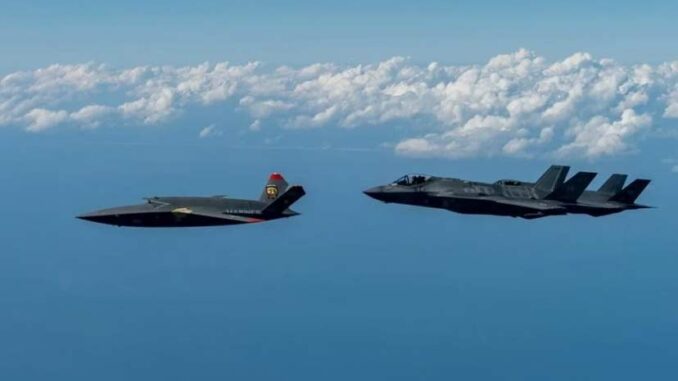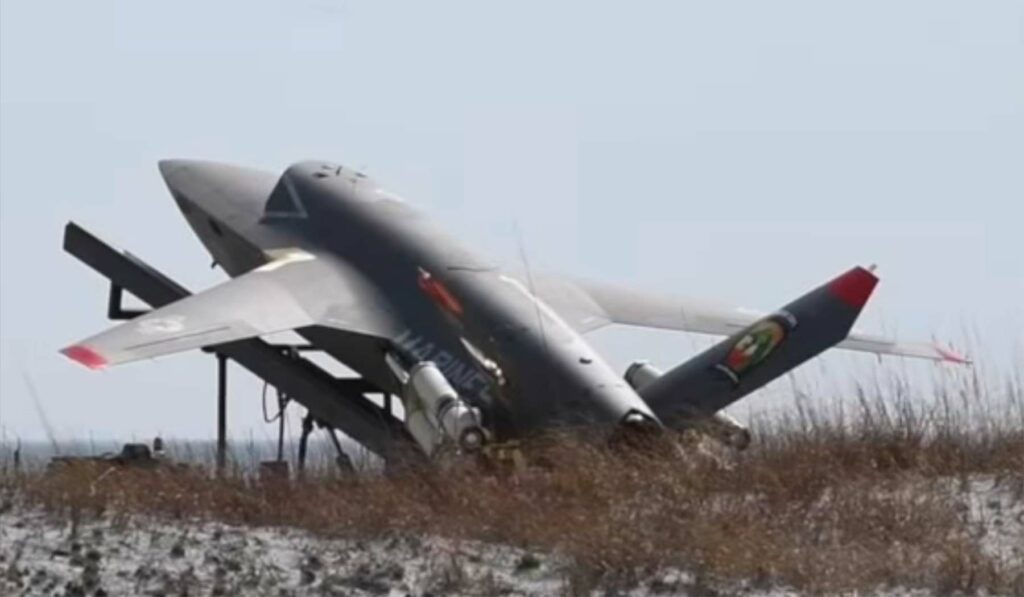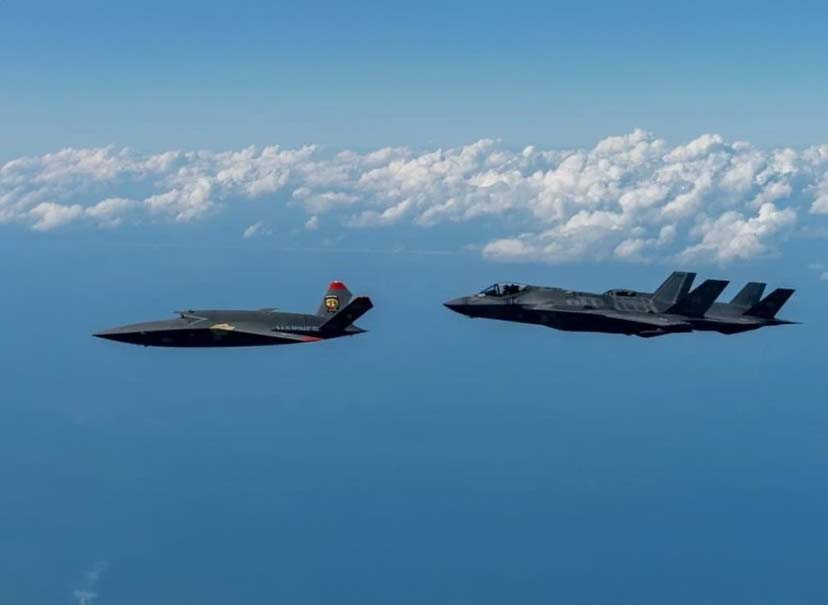
The Valkyrie collaborative drone demonstrates its capabilities with the F-35, marking a breakthrough in air strategy.
As part of ongoing innovation in defense, the recent demonstration of the XQ-58A Valkyrie UAV flying alongside two F-35 aircraft marked a significant milestone. This breakthrough illustrates the successful integration of autonomous and collaborative capabilities into military air operations, promising a transformation of combat tactics and an increase in operational efficiency.

An unprecedented air partnership
Valkyrie and F-35: a strategic alliance
The XQ-58A Valkyrie demonstration by Kratos Defense & Security Solutions, Inc. highlights the emergence of new air combat strategies. Operating since 2019, the Valkyrie demonstrated its advanced electronic attack capabilities by autonomously identifying and geolocating targets of interest. Its ability to transmit target coordinates and execute non-kinetic electronic attacks reinforces the potential of collaborative assets in threat management.
With high performance, long-range flight capability at subsonic speeds and operational flexibility, the Valkyrie aligns with the cost and efficiency objectives of the US Department of Defense (DoD). This demonstration, the result of a collaboration between Kratos, Northrop Grumman and the Marine Corps, highlights the company’s commitment to integrating advanced technologies to meet DoD strategic objectives.
The context of a major innovation
A significant advance in modern warfare
The integration of the Valkyrie UAV alongside F-35 aircraft as part of the US Marine Corps’ PAACK-P program marks a crucial step in the evolution of air warfare. This development comes in an era where modernization of defense capabilities is paramount, taking advantage of technologies such as AI, IoT and autonomous systems. The realization of this demonstration at Eglin Air Force Base in Florida confirms the armed forces’ commitment to incorporating innovative solutions to increase efficiency and reduce risks to human pilots and expensive manned platforms.
The consequences of a strategic evolution
Towards a new era of air strategy
The success of the Valkyrie alongside the F-35 reveals several strategic and operational implications for defense. Firstly, it demonstrates the viability of collaborative autonomous platforms in enemy air defense suppression (SEAD) roles, significantly increasing the lethality and survivability of existing manned platforms. Furthermore, this innovation paves the way for more advanced air domain strategies, where automation and collaboration between assets increase the effectiveness of military operations.
However, the integration of such technologies also raises questions about the evolution of military doctrines, crew training, and the management of interactions between manned and autonomous systems. The development and deployment of these technologies calls for in-depth reflection on rules of engagement and safety protocols to maximize their potential, while guaranteeing the protection of assets and personnel.

Towards a revolution in military air operations
The successful demonstration of the Valkyrie with the F-35 is not just a technological feat; it heralds a profound transformation in air warfare tactics. The adoption of autonomous platforms like the Valkyrie alongside advanced fighter aircraft like the F-35 promises to reshape the approach to air defense, emphasizing the synergy between man and machine. This strategic alliance between drones and capable fighter jets is a major step towards optimizing military operations, offering unrivalled air superiority in future conflicts.
The collaboration between the Valkyrie UAV and the F-35 underlines a significant evolution in air warfare capabilities, promising increased operational efficiency and reduced risks for aircrews. Against a backdrop of ongoing modernization of the armed forces, this breakthrough opens up new perspectives for air defense strategies, with far-reaching implications for the future of modern warfare.
War Wings Daily is an independant magazine.